こうやって歴史は塗り替えられるのか…(愛知県名古屋市千種区姫池通 骨董買取 古美術風光舎)
2025.02.13
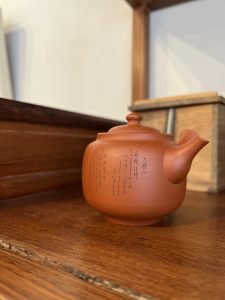
昨今のデジタル化により、歴史研究の分野も解析や分析の方法が大きく変わりつつあり、このところ連日のように新しい発見のニュースなどを目にしますよね。主要な資料へのアクセスがより容易になったり研究プロセスの効率が向上したりと、急速に歴史研究が進み、またそのあり方を大きく変えてきているようにも感じたりしています。ただ、個人的には連日の歴史の謎解きみたいなニュースや最古の○○みたいなニュースが面白くてたまらないのですが、先日もそんなニュースをひとつ発見しました。
またまた日本最古の文字が発見されたニュースです。
日本に残る最も古い文字で皆さんが知っているとすると、福岡県志賀(しかの)島で発見された「漢委奴国王」(かんのわのなのこくおう)と刻印された金印でしょうか。1世紀に後漢の光武帝(こうぶてい)から奴国(なこく)の使者が受け取ったものと考えられています。ですが、これは漢の国から渡ってきたものなので、日本で書かれた文字ではありません。
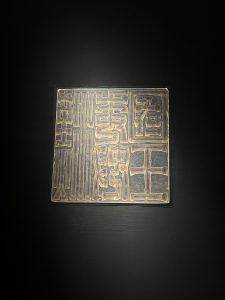
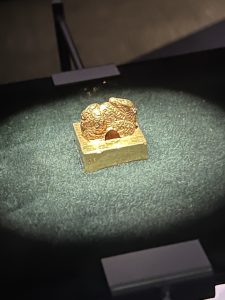
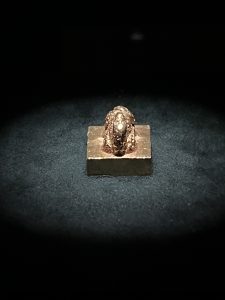
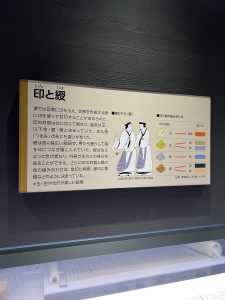
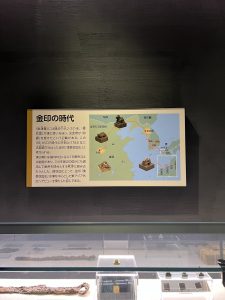
(昨年、福岡にて金印をみてきました。)
日本で書かれた最古の文字となると、和歌山県隅田(すだ)八幡神社に伝わる人物画像鏡(じんぶつがぞうきょう)、千葉県稲荷台(いなりだい)1号墳の「王賜」(おうし)銘鉄剣などがありますが、その中で日本に残る最も古い漢字資料は、埼玉県行田市の稲荷山古墳から出土した「稲荷山古墳鉄剣銘」でして、471年のものとされています。
そんな中、今回見つかった高知県南国市の遺跡から出土したのは土器の破片に文字の可能性が高い2つの文字が刻まれていたようです。この土器は弥生時代後期から古墳時代初め頃のようでして3世紀半ばのいったところでしょうか。先の発見された漢字は4世紀頃のものが多いので、この時期に2つ以上の文字が見つかるのは極めて珍しく、国内で最も古い部類の「文章の一部」の可能性もあるということのようです。
この土器の破片が見つかったのは弥生時代に高知県内最大規模の集落が広がっていたとされる南国市の若宮ノ東遺跡。かつて発見された文字もそうですが、わりと地方でも漢字の発見があることに驚き、実は早くから全国に漢字が広まっていたことに驚きます。が、さらに面白い点は「文章ではないか?」と想像されられるこの2文字にあります。
土器の破片は大きさは10センチほどで、弥生時代後期から古墳時代初めにかけて作られたつぼの一部とみられ、表面には2つの文字が上下に続けて刻まれています。その2文字は「何」と「不」という漢字の可能性が高く、これは漢文で「なんぞ、ざる」と読み、(漢文などで習った)あの反語表現「なぜ、しないのか」という意味になるのではないかということです。また、破片の形から推定されるつぼの大きさや傾きなどから、見つかった文字の下にさらに文字が続くと考えられており、その下の文章は何と書かれていたのか…非常に気になります。
今回と同じ時期に文字が刻まれた土器は全国で10点以上が見つかっているようなのですが、2文字以上のものは極めて珍しく、国内で最も古い部類の「文章の一部」である可能性もあるとのこと。漢字を使った表現がどのように日本に入ってきたのかなど、これをきっかけに議論や研究がさらに活発化していきそうですね。
というわけで、すでに自分の中でも謎解きが沸々と湧いてきまして…。
土器の側面に「なぜ、○○しないのか…」などと書くなんて、漢詩などの一節を書いていたのか?土器に個人的な文章って書くのかな?それとも役人の書状的なものか?そもそも都や中国からからいただいたお土産物なのか?いやいや、この地方にもすでに漢字で文章を読み書けるインテリがいたのか?のなどなど何のために誰のために書いたのか?どうやってここにたどり着いたのか、いや、ここで作られたのか?。
このたった2文字が、私の謎解きの暴走を駆り立てます。恐るべし「何」と「不」笑。
それではごきげんよう。(スタッフY)
With the recent digitalization, the methods of analysis and analysis in the field of historical research are changing drastically, and we see news of new discoveries every day these days, don’t we? I feel that the rapid progress of historical research is changing the way it is conducted, with easier access to key documents and improved efficiency in the research process. Personally, however, I am fascinated by the daily news of historical riddles and the oldest known Japanese writing, and the other day I discovered another such news item.
The other day, I found one such news. It is the news about the discovery of the oldest Japanese characters again.
The oldest known Japanese script is a gold seal engraved with “Kannowanokoku-ou,” which was found on Shika Island in Fukuoka Prefecture and is believed to have been received by an envoy from the Nukoku Kingdom in the 1st century by the Later Han Emperor Koubutei. However, this is not written in Japan, as it came from the Han Dynasty.
The oldest written characters in Japan include a mirror with a human figure inscription from the Sumida Hachiman Shrine in Wakayama Prefecture and an iron sword inscribed with the inscription “Oushi” from the Inaridai No. 1 Tumulus in Chiba Prefecture, but the oldest remaining Chinese character material in Japan is the “Oushi” inscription found in the Inariyama Tumulus in Gyoda City, Saitama Prefecture, which is inscribed with the inscription “Oushi”. The oldest surviving Chinese character material in Japan is the “Inariyama Tumulus Iron Sword Inscription” excavated from the Inariyama Tumulus in Gyoda City, Saitama Prefecture, dated to 471.
In the midst of all this, the newly discovered piece of pottery excavated from a site in Nankoku City, Kochi Prefecture, seems to have been inscribed with two possible characters on the pottery shard. The earthenware seems to date from the late Yayoi period to the early Kofun period, around the middle of the 3rd century. Since most of the previously discovered Kanji characters date from the 4th century, it is extremely rare to find two or more characters from this period, and it is possible that this is one of the oldest pieces of writing in Japan.
The pottery shards were found at the Wakamiya-no-higashi site in Nankoku City, where the largest settlement in Kochi Prefecture is said to have spread during the Yayoi period. Like the characters that were once discovered, I am surprised that kanji characters were discovered even in rather rural areas, and I am surprised that kanji was actually spread throughout the country from early on. But what is even more interesting is the fact that these two characters, which one might imagine to be a sentence, were found in the same place in the same time as the original. The pottery shards were 10 cm in length and 10 cm in width.
The pottery shard is about 10 cm in size and appears to be part of a jar made between the late Yayoi period and the early Kofun period, with two characters inscribed on the surface, one above and one below. The two characters are likely to be the Chinese characters for “what” and “not,” which are read in Chinese as “what” and “zaru,” which may mean “why” or “why not” (as learned in Chinese literature). In addition, based on the size and inclination of the crucible, which is estimated from the shape of the shards, it is thought that there are further characters that follow the one found, and what the text below that was written…is very interesting.
It seems that more than 10 pieces of earthenware with characters inscribed at the same time as this one have been found throughout Japan, but those with more than two characters are extremely rare and may be “part of a text” in the oldest category in Japan. It seems that this will trigger further discussion and research on how expressions using Chinese characters came to Japan.
So, the solution to the mystery has already begun to boil up in me….
How could someone write something like “Why don’t you ____…” on the side of an earthenware vessel, or a passage from a Chinese poem, etc.? Do people write personal writings on earthenware? Or is it a letter-like writing by a government official? In the first place, were they souvenirs received from the capital or China? No, no, there were already intellectuals in this region who could read and write in Chinese characters? What and for whom did they write, e.g., “How did you get here? How did they get here, or rather, were they made here? These two mere words spur me on to solving the mystery out of control. The dreaded “what” and “un” laugh.
Have a good day. (Staff Y)
*****************
ご実家の整理やお片付けなどをされている方のご相談などが多くございます。
お片付けなどくれぐれもご無理のないようになさってくださいませ。
風光舎では古美術品や骨董品の他にも絵画や宝石、趣味のお品など様々なジャンルのものを買受しております。
お片付けをされていて、こういうものでもいいのかしらと迷われているものでも、どうぞお気軽にご相談下さいませ。
また風光舎は、出張買取も強化しております。ご近所はもちろん、愛知県内、岐阜県、三重県その他の県へも出張いたします。
まずは、お電話お待ちしております。
愛知県名古屋市千種区姫池通
骨董 買取【古美術 風光舎 名古屋店】
TEL052(734)8444
10:00-18:00 OPEN
#出張買取#骨董#古美術#骨董品#絵画#版画#茶道具#刀剣#彫刻

